News
‹ back to weather news
News
-
Australia's Black Summer Fires five years ago on this day
Craig Mitchell, 1 January 2025What has been recorded as one of the most intense and catastrophic fire seasons in Australia's recorded history, the Black Summer bushfire event left behind a devastating loss in life, to property and wildlife, and a lasting scar on the environment with an estimated 24.3 million hectares (243,000 square kilometres ) of land burnt - larger than the entire state of Vic (about 227,000 square km).
It was over the Christmas and New Year period when one of the worst fire outbreaks occurred.
Across southeast Australia, uncontrolled fires had been burning in heavily forested areas of eastern Victoria and across the inland mountainous regions of eastern NSW through late 2019 and leading up to Christmas.
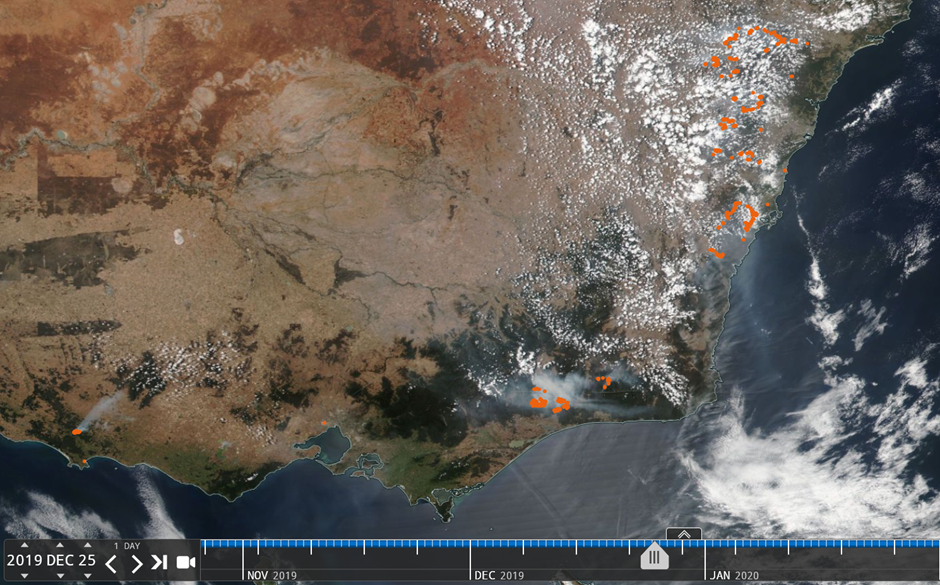
Image: Satellite image showing scattered cloud cover and fire hotspots (orange dots) on 25th December 2019. [Source: NASA Worldview]
Fanned by extremely hot and dry northerlies winds during the previous two days, a cold front passing over southeast Australia on the 31st of December 2019 provided thunderstorms and lightning strikes over tinder dry bushland of eastern Victoria and southeast NSW.
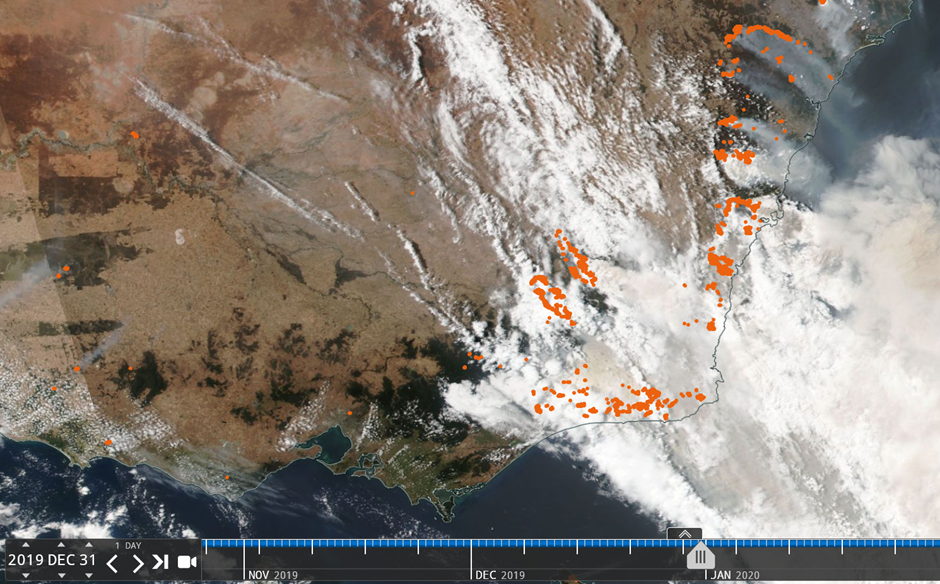
Image: A cold frontal cloud passing over southeast Australia (cloud band over eastern Victoria and eastern NSW) on 31st December 2019 which generated lightning strikes and initiated additional spot fires (fire hotspots – orange dots). [Source: NASA Worldview]
Dry lightning strikes ignited what was to become a major fire front containing existing bushfire outbreaks into one near continuous fire front stretching from the Gippsland region of Victoria along the NSW Great Dividing Range to near Jervis Bay.
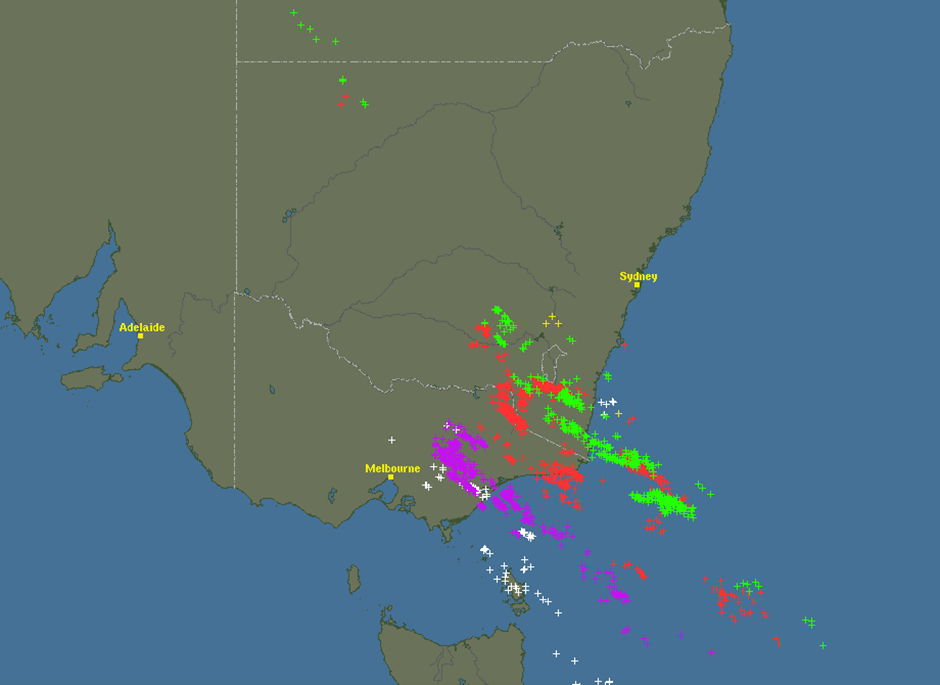
Image: Lightning strikes (plus symbols) over an hour for the period 11am-noon (white), 2-3pm (magenta), 5-6pm (red), 8-9pm (green) and 11pm-midnight (yellow). [Source: Blitzortung.org]
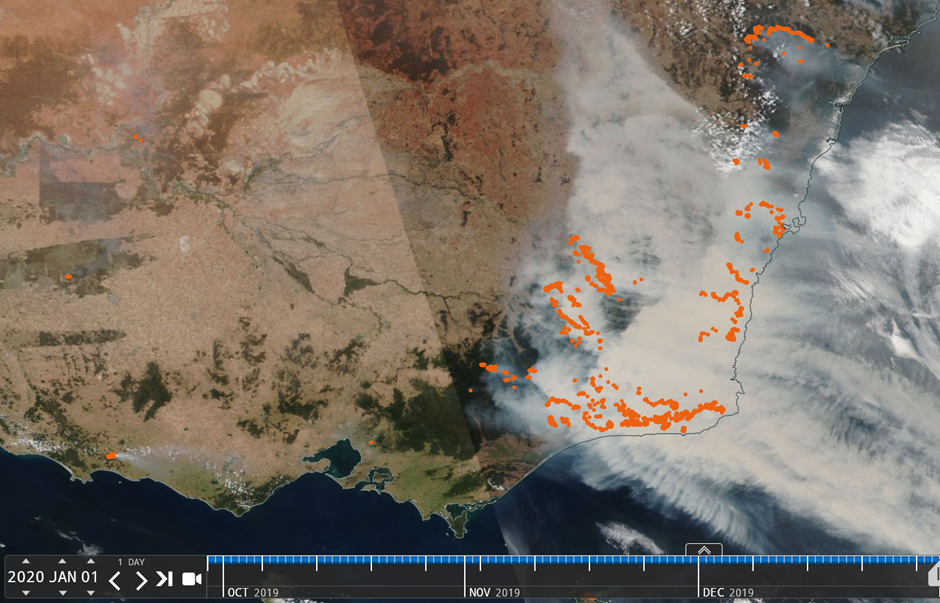
Image: Satellite image on January 1st 2020 showing extensive smoke (light brown) covering eastern Victoria and eastern NSW from fire hotspots (orange dots) forming a major fire front over Gippsland and inland from the NSW south coast. Additional major fire fronts were burning across NSW’s Southwest Slopes. [Source: NASA Worldview]
Uncontrolled fires in January were also burning across other parts of the country, more notably at Kangaroo Island (South Australia) and between Kalgoorlie and Esperance in Western Australia.
A major turning point came in the second week of February when a significant rain event developed over southeast Australia. This much-needed precipitation provided a crucial moment where fire crews were able to gain the upper hand along many of the fire fronts impacting NSW and eastern Victoria. Between February 7th to 14th, substantial rainfall was recorded across the region with rainfall accumulations exceeding 150mm along the NSW coast and exceeding 100m further inland over the Great Dividing Range.
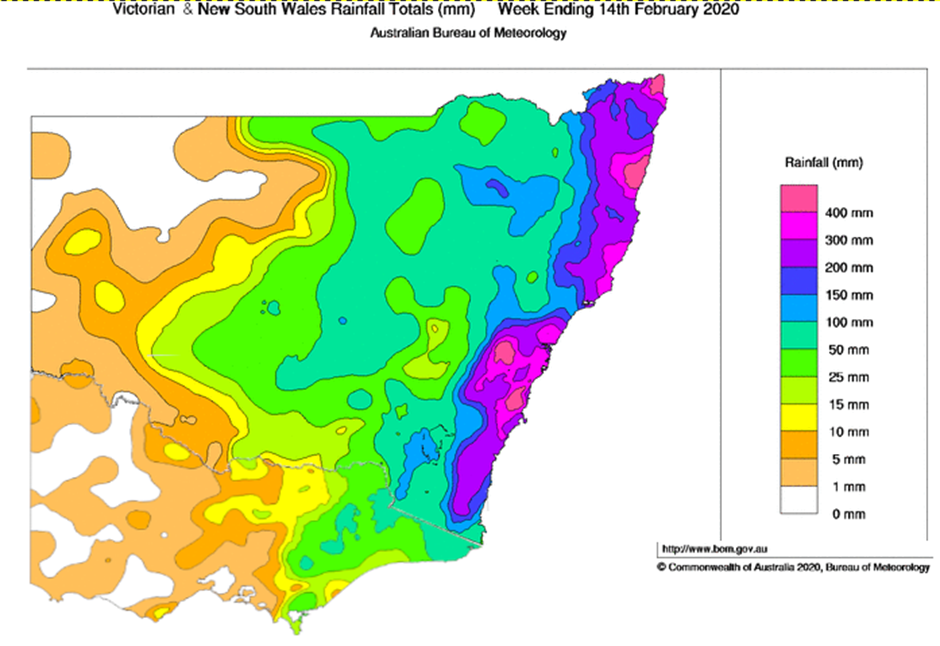
Image: Total rainfall accumulations over 1 week ending on 14th February 2020. [Source: © Bureau of Meteorology]
It wasn't until March of that year that all fires in both NSW and Victoria were declared contained or extinguished.
The Black Summer fires of 2019-2020 have been recorded as one of Australia's deadliest natural disasters. The toll that such an event has taken on the country will live long in the memories of many Australians.
Thunbnail: Fire at night [Credit: iStock - Byronsdad]
- Other news
- Sat 04 Jan 2025 Pipeline set to roar for the Da Hui Backdoor Shootout surf competition
- Fri 03 Jan 2025 Melbourne to have hottest weekend in 10 years as heatwave hits SE Australia
- Thu 02 Jan 2025 Australia registers 2nd warmest year on record
- Tue 31 Dec 2024 New Year’s Eve and Day: will you fry or soggify?
- Tue 31 Dec 2024 Australia's weather extremes in 2024

